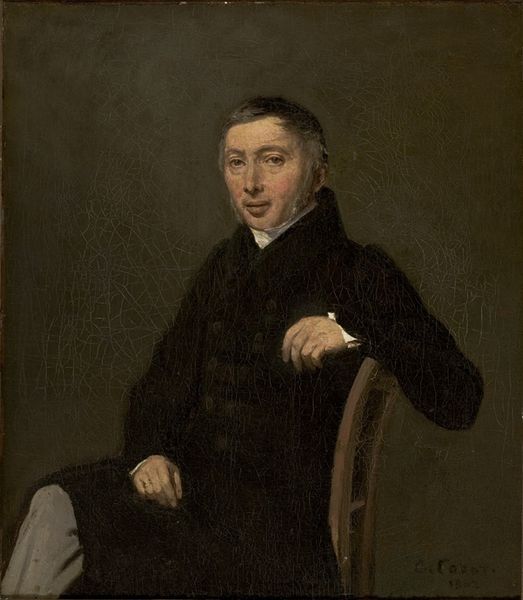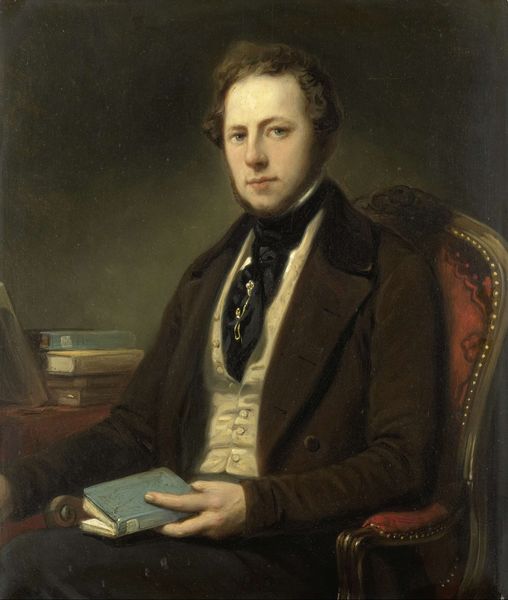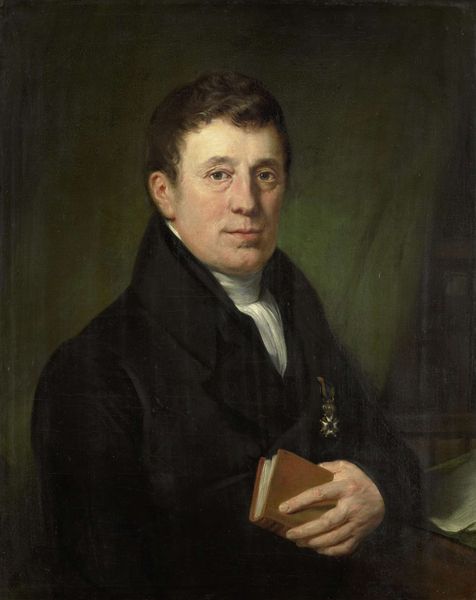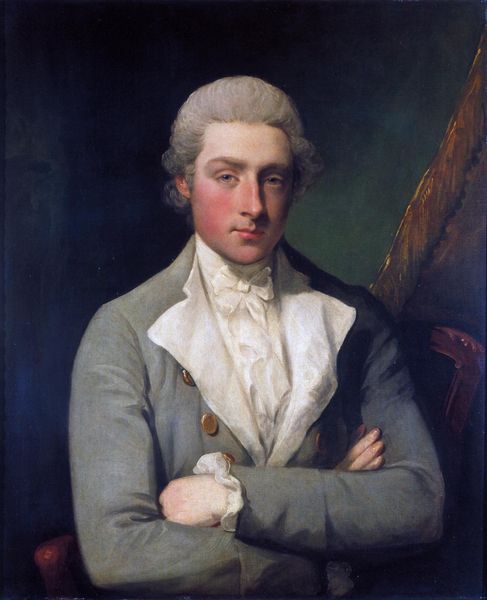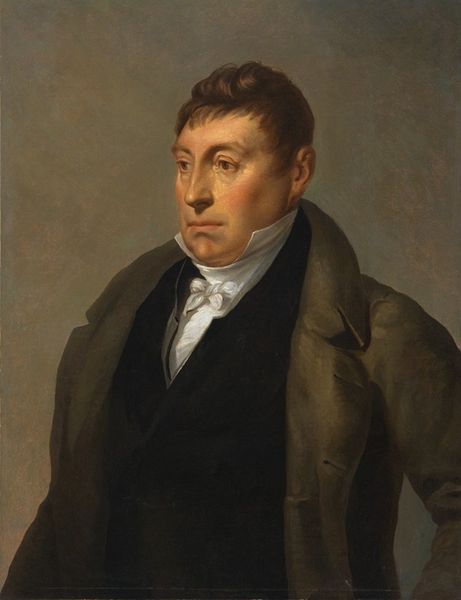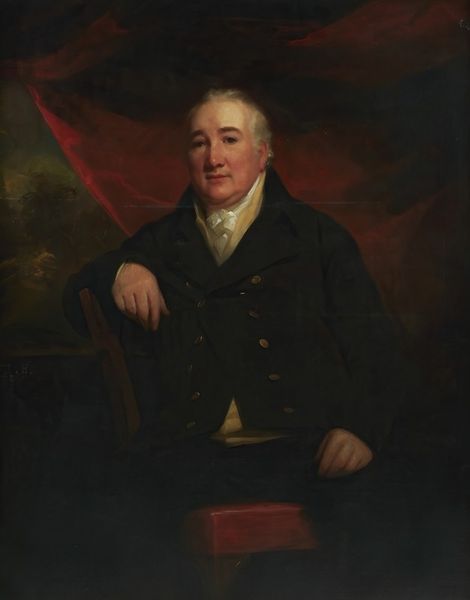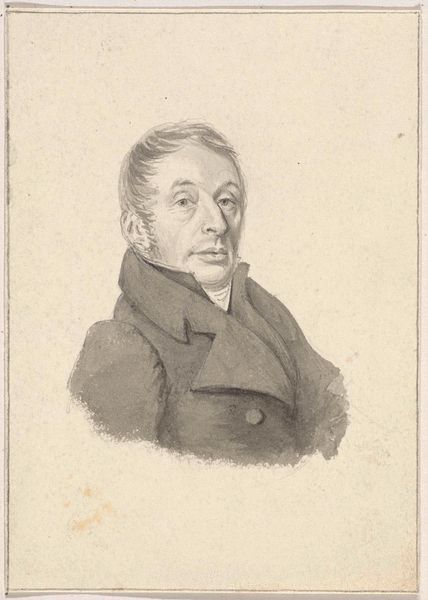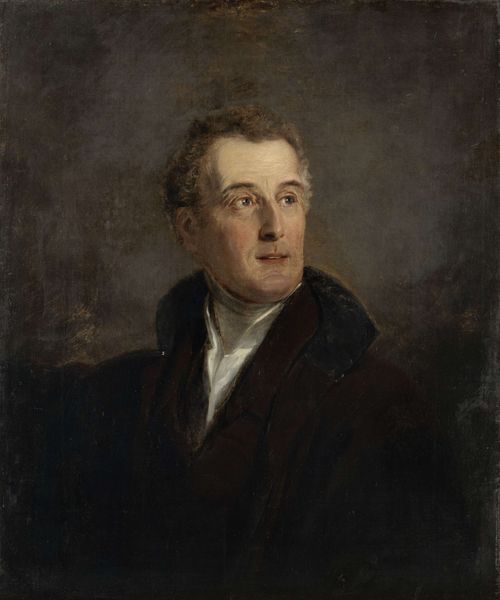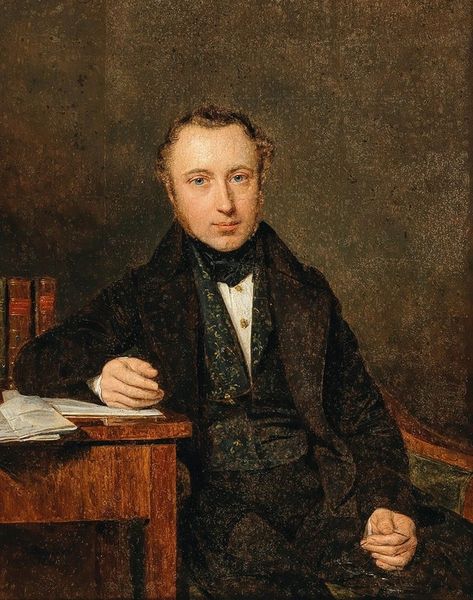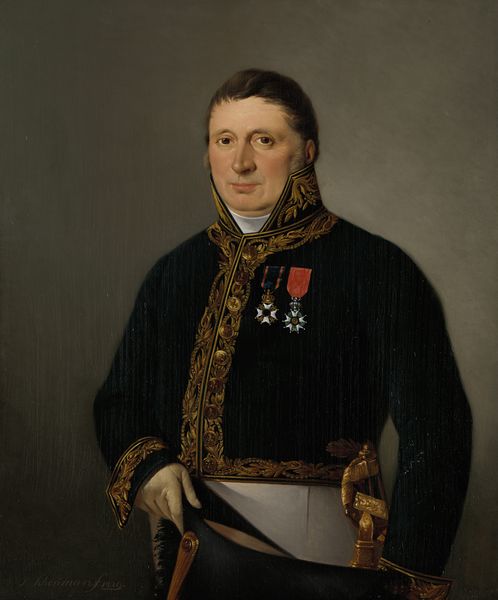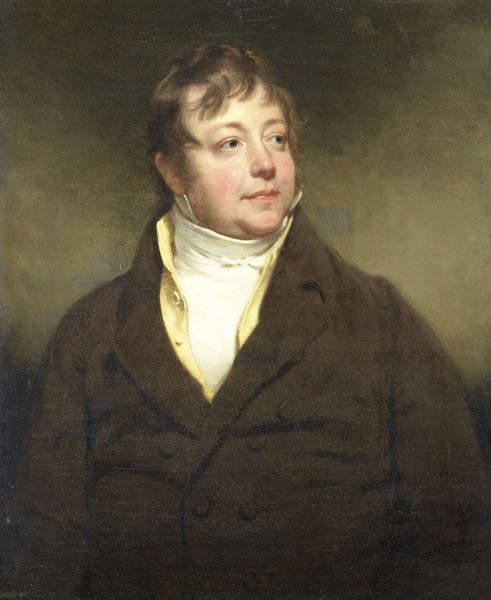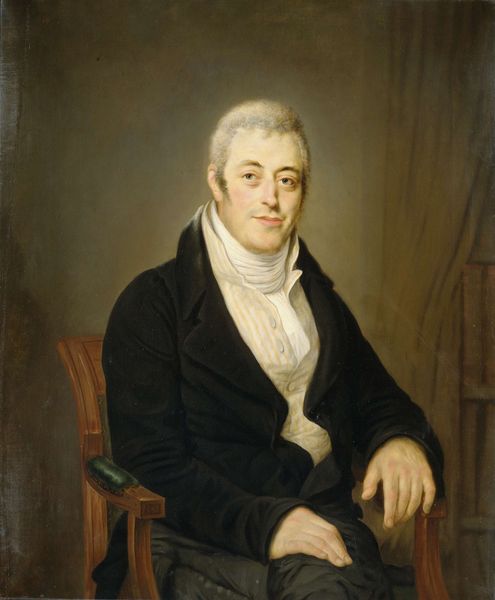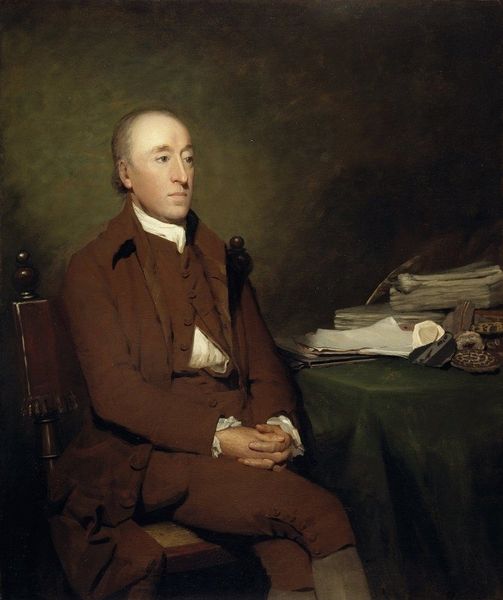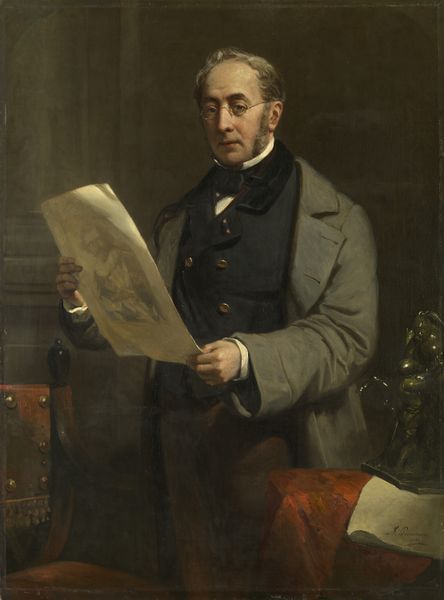
Adam-François-Jules-Armand (1771-1848), Count van der Duyn van Maasdam 1839
0:00
0:00
oil-paint
#
portrait
#
oil-paint
#
romanticism
#
genre-painting
#
history-painting
#
realism
Dimensions: height 121.6 cm, width 94.7 cm, thickness 3.0 cm, depth 10.7 cm
Copyright: Rijks Museum: Open Domain
Editor: Here we have Jean-Baptiste van der Hulst's "Adam-François-Jules-Armand (1771-1848), Count van der Duyn van Maasdam," painted in 1839. It’s an oil painting currently residing in the Rijksmuseum. I find the formality and muted tones quite striking. What do you see in this piece? Curator: Indeed, it's the visual structure itself that commands our attention. Notice how the artist employs a relatively limited palette. The dominant blacks and greys of the Count's attire are skillfully juxtaposed against the warmer tones of his face and the implied light source. Does this restricted use of color speak to you? Editor: I suppose the limited colors could emphasize his status, like an unchanging symbol of power. It's very dignified. How does this relate to its Romantic style? Curator: Precisely. Now, consider the interplay between line and form. The rigid lines of his jacket contrast with the softer, more rounded forms of his face and hands. This duality contributes to the overall composition, creating a sense of controlled tension. And what of the symbolic order? What is expressed in the way the portrait is framed, with the count slightly off center? Editor: Perhaps a sense of lived reality, not idealized, with realism seeping into the formal Romantic style? I hadn't considered the angle. Curator: Precisely, notice the use of dark shadow on the right, perhaps suggesting secrets or history that frames our subject's place. The artist's intention appears to engage our critical viewing through the subject's arrangement in the painterly plane. Editor: Fascinating! Focusing on those elements really opened up new interpretations for me. Curator: Yes, the close analysis reveals layers of artistic decision, independent of historical considerations. Each element carefully constructed for specific effect.
Comments
No comments
Be the first to comment and join the conversation on the ultimate creative platform.
